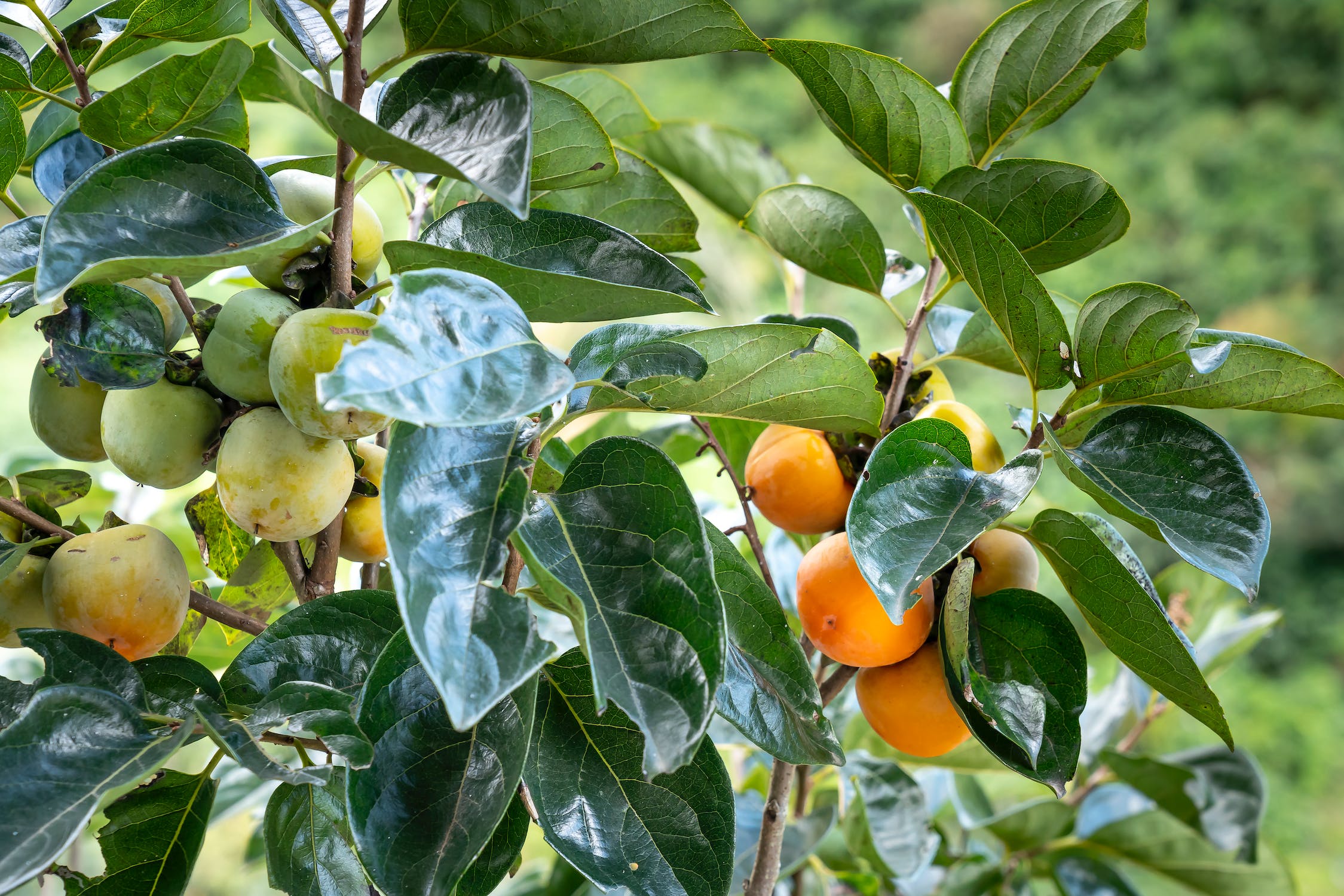If you’re looking to add some variety to your garden this spring, consider adding a few fruit trees. Fruit trees are great for providing you with your own produce but also add a fun pop of color to your yard. North Carolina has very warm summers and cool winters which is perfect for apples, pears, persimmons, plums & more. North Carolina is also very humid which can be troublesome for fruit trees. Selecting the right variety of trees and proper fruit tree maintenance is key to avoiding tree diseases and pests. Follow these tips for a successful and fruitful orchard.
Native Fruit Trees of North Carolina
While a large variety of fruit trees can be successfully grown and harvested in North Carolina, there are a few that are native to North Carolina.
Paw-Paw Trees
The paw-paw tree produces an edible fruit that can be eaten even if the tree is infected with a skin fungus or Japanese beetles. This fruit tree is also a great pollinator for gardens. If you choose to plant the paw-paw tree, you will need to plant two different cultivars to ensure pollination. Their fruits are considered edible when they are soft and almost look like they are about to rot.
American Persimmons
American persimmons grow very well across the whole state. They can grow very tall, up to 70 feet, and can take up to fifteen years to produce any fruit. If you’re looking for a fast-growing fruit tree that will be ready to harvest fairly quickly, this may not be the best fruit tree for you.
American Plums and Chickasaw Plums
The American plum and the Chickasaw plum produce small very tart plums that are best used for jams and jellies. The seeds, stems and leaves of these two native North Carolina plum trees can be toxic, only the small tart plums are edible. These beautiful trees attract a variety of birds and other wildlife into your garden.
Fruit Trees That Do Well in the NC Triangle Area
In addition to these North Carolina native fruit trees, there are several other fruit trees that thrive in the Triangle area.
Citrus Trees
Citrus trees do well in North Carolina if planted in pots that can be moved in during the colder winter months. As tropical plants, they thrive outside in North Carolina summers full of heat and humidity. Lemons and limes do very well in containers and if maintained carefully can produce fruit year-round.
Species: All
Pear Trees
Pear trees can be somewhat more challenging to grow in North Carolina as they are particularly susceptible to disease & pest damage. With the right amount of maintenance and pruning, you can yield a good amount of fruit.
Species: Warren, Hosui, Shinseiki
Apricot & Plum Trees
Apricots and plums grow fairly well but struggle with North Carolina’s humid climate. Several varieties are self-fruitful, however, planting two cultivars greatly increases fruit production. These fruit trees need to be sprayed regularly during the growing season with a multipurpose fungicide/insecticide.
Species: Blenheim Apricot, Gold Kist Apricot, Santa Rosa Plum, Methley Plum
Peach & Nectarine Trees
Peaches and nectarines are similar to apricots and plums in that they will grow well but struggle with North Carolina’s humid climate. They need the same multipurpose fungicide/insecticide spraying regularly and proper maintenance to produce a good crop.
Species: Suncrest Yellow Peach, Fantasia Yellow Nectarine, Goldmine White Nectarine, Elberta Yellow PeachCaring for Fruit Trees
Persimmon Trees
Persimmon trees are very adaptable to most soil conditions and are not as susceptible to tree diseases and pests. They are certainly one of the more accessible fruits to grow locally. Many persimmon fruit trees will produce without a pollinating buddy, while others will depend on a second or third tree for pollination.
Species: Fuyu, Coffeecake, Hachiya, Chocolate
Apple Trees
Apple trees can be grown in many states and are very hearty fruit trees. They are able to withstand the cold and heat to a certain extent. For a bountiful apple crop, a fair amount of maintenance is needed. This includes pruning, applying fresh compost and mulch, thinning the fruit throughout the season, frequent watering, and regular spraying with an organic fungicide.
Species: Golden Delicious, Fuji, Red Delicious, Gala
Fruit Tree Maintenance & Care
Knowing a little more about the ongoing upkeep and care of fruit trees can be helpful in deciding on which fruit trees and how many fruit trees are best for your garden.
Planting Fruit Trees
Each fruit tree you purchase should come with specifications on the proper spacing and planting depth for growing a healthy and fruitful tree. Some trees like their soil more moist than others and some like more sun than others. Keep these factors in mind:
- Tree Selection – Pick a fruit tree that will do well in the space you have available or ensure you provide the right space for the tree you’d really like.
- Follow Planting Guidelines – Plant your tree at the recommended depth and allow for enough space between other plants and hardscaping in your yard. Check to see if your fruit tree needs a pollination friend. Some fruit trees require more than one tree to produce fruit.
- Wet Roots – Keep your tree watered thoroughly after first planting until it becomes more established.
- Stake The Tree – Provide the proper support for the tree to grow upright with a strong trunk and thick branches.
- Mulch – Place a thin layer of mulch around the base.
Pruning Fruit Trees
You will first want to prune back anything that is dead, damaged, or diseased. Also, check for sprouts growing off of the base of the fruit tree trunk. You will want to remove these as they are not likely to produce fruit. You will then want to thin out your fruit tree to allow more light and air into the canopy. This will help boost fruit production and help reduce disease and pest problems. To thin out your tree, remove any branches that grow downward, toward the center of the tree, or any that cross paths with another branch. Once you have thinned your tree out enough to have evenly spaced branches, you’re ready to prune back the outermost growth. This is very much like giving your fruit tree a haircut.
It is a good idea to prune your trees in the winter when you can easily see the lines and growing directions of all the branches. Be careful when making these essential cuts to your tree, the type of cut makes a difference. Prune each branch back to a point one-quarter inch above a bud that faces the direction you want that branch to grow in the coming year.
Fertilizing Fruit Trees
Fertilize your fruit trees twice a year, in the spring and in the fall. Mature fruit trees thrive with one to two pounds of actual nitrogen per year plus equivalent amounts of phosphorus and potassium.
Make Sure Your Fruit Trees Can Flourish
To prepare your yard for your new fruit trees, contact BlackHawk Tree Services. We provide free estimates on tree removal, pruning, and stump grinding services in Raleigh and surrounding towns.

